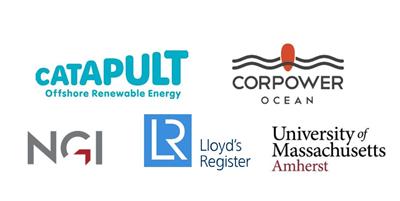Benjamin Cerfontaine and Susan Gourvenec awarded ORE Supergen funding to develop design methodology for shared anchors for floating offshore wind

Dr Benjamin Cerfontaine and Prof. Susan Gourvenec were one of 8 projects awarded funding in the latest ORE Supergen Flex Funding round. The scheme enables UK researchers to respond to a number of key research challenges in ORE, and this year was additionally supported by the Offshore Renewable Energy Catapult’s Floating Offshore Wind Centre of Excellence (FoW CoE).
The SEAMLESS project - SharEd Anchor Multidirectional Load Envelopes with Strength Synthesis - will investigate anchor sharing which could reduce capital expenditure of floating ORE farms that require hundreds of anchorages.
The goal of the 12 month project is to develop a method for shared anchor geometry optimisation and new design guidance to unlock performance gains. This will be achieved by answering two fundamental questions:
- What threshold level of upwards cyclic load can be sustained without significant ratcheting?
- How does the stress history of vertical-lateral load interactions affect the capacity?
To address these questions, and create a framework for design solutions, this project will identify realistic shared-type loading and use the University of Southampton geotechnical centrifuge at the UKCRIC National Infrastructure Laboratory to apply these to caisson anchors in dense sand, representative of UK and European seabeds. Additional data from pressure sensors and X-ray tomography of the centrifuge samples, carried out at the University of Southampton m-vis facility, alongside element level cyclic direct shear tests (CDSS) will be combined to study the fundamental mechanisms underlying the anchor-scale behaviour. A predictive framework for capacity variations and ratcheting quantification will be developed to create V-H failure envelopes combined with cyclic degradation/enhancement diagrams, extending current practice.
The project will be developed and carried out in collaboration with a range of partners and collaborators, including the ORE Catapult Floating Offshore Wind Centre of Excellence, CorPower Ocean, Lloyd’s Register, Norwegian Geotechnical Institute and the University of Massachusetts Amherst.

See the Supergen announcement here.
Follow @B_Cerfontaine and @SusanGourvenec for updates on the postdoctoral opportunity for this project and also for project updates.
